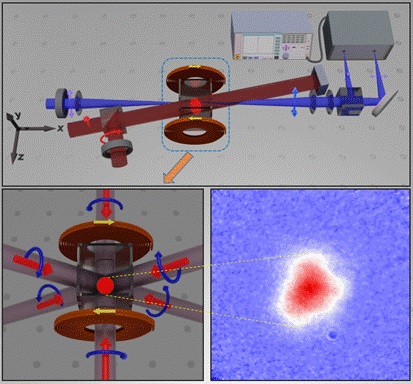Ministry of Science & Technology
Long lived correlations between waves in atomic systems at ultralow temperatures can be exploited for efficient quantum computing
Posted On:
30 DEC 2021 4:39PM by PIB Delhi
Correlations between waves in atomic systems or spin coherences are long-lived at ultralow temperatures, says a new study by scientists who have developed a new technique to measure it. A system with long-lived spin coherences is a better resource as quantum computer. It allows quantum operations and logic gates to be more efficiently implemented so that the system becomes a better quantum sensor compared to systems where coherence is short-lived.
This newly explored property of atomic systems at low temperature can be exploited for efficient quantum sensing and quantum information processing for application in quantum computation and secure communication. The newly discovered technique can help study the real-time dynamics of quantum phenomena such as quantum phase transitions in a non-invasive manner.
Spin is a fundamental quantum property of atoms and elementary particles such as electrons and protons. As atoms are cooled to lower temperatures, their quantum nature is manifested more prominently. However, while the spin degree of freedom is a highly discussed topic, especially in the context of quantum information processing, the dynamical measurements on spins at ultralow temperatures were not available. This is because most of the detection techniques in cold atom experiments are destructive and disturbs the atomic sample during detection.
A team of Scientists from Raman Research Institute, Bangalore, an autonomous institute of the Department of Science & Technology, Govt. of India, have measured the spin properties of atoms cooled to micro-Kelvin temperatures using the new method they have devised. Quantum properties dominate over everyday classical observations at this temperature –- very near absolute zero temperature, and it is for the first time that spin dynamics have been detected at this temperature regime using polarization fluctuation measurements.
With the new technique, the scientists measured the properties of spins and lifetime of an atomic spin state with a million-fold improvement in detection sensitivity compared to the existing technology. They proved that spin coherence at this low temperature is long-lived.
In this work led by Sanjukta Roy, Dibyendu Roy, and Saptarishi Chaudhuri and co-authored by Ph.D. students Maheswar Swar and Subhajit Bhar from RRI increased signal strength of spin noise by a million-fold by using coherent laser drive. They made the spin noise spectroscopy technique usable for spectroscopists measuring systems where signal level is too low to detect. The research has been published in the journal Phys. Rev. Research. The work has been financially supported by funding from DST (Department of Science and Technology) and MeitY (Ministry of Electronics and Information Technology).
According to the RRI team, this work derives its original motivation from Nobel laureate Sir C V Raman’s seminal work on light scattering. They used laser cooling techniques to cool down the neutral atoms near absolute zero temperatures and used laser light to coherently drive quantum transitions in these cold atoms and a polarimetric detection technique to precisely detect the spin dynamics in these atoms. Eventually, they determined the lifetime of the spins in cold atoms and found them to be long-lived – nearly a millisecond, which is at least a thousand times more than the spin lifetime of the atoms at room temperature. The RRI team explained the observations with the help of a theoretical framework based on advanced quantum mechanical concepts.
“In this novel technique, the spin-dynamics of the atoms could be detected at the single-atom level instead of the bulk properties detected using available techniques,” the RRI team said, explaining the importance of the new technique.
According to the team, this technology can be used to make devices that can precisely detect small magnetic fields, which has important applications in mining and prospecting. The work also has important applications in biomedical imaging, where time-resolved measurements of small magnetic fields are required.

Publication link: DOI: 10.1103/PhysRevResearch.3.043171
For more details, Saptarishi Chaudhuri (srishic@rri.res.in) can be contacted.
*****
SNC / RR
(Release ID: 1786323)
Read this release in:
Hindi